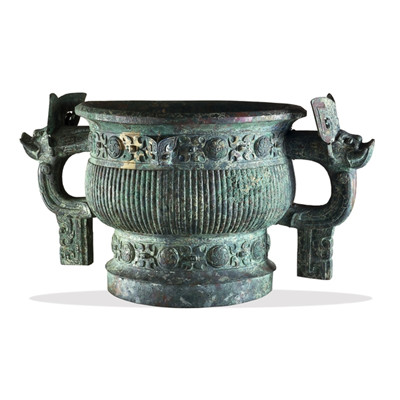If you look inside our basin, there is a surprise.
簋的內部給人驚喜,
At the bottom, where it would have normally been hidden by food when in use, there is an inscription written in Chinese characters, that are not so unlike the ones still used today.
表明它既是祭祀用品,也是權力工具。在通常會被食物掩蓋的底部,刻著一些與現代漢字不盡相同的文字,
And this inscription tells us that this particular bowl was made for a Zhou warrior, one of the invaders who overthrew the Shang Dynasty.
表明這個簋是為一名曾參與推翻商王朝的武士制造的。
At this date, any formal writing is prestigious, but writing in bronze carries a very particular authority.
在那個時代,所有的書面文字都極有分量,青銅器上的銘文更是極具權威。
The inscription at the bottom of the gui tells us of a significant battle in the Zhou's ultimate triumph over the Shang:
銘文記述了周人對商人的最終勝利:
"The King, having subdued the Shang country, charged the Marquis Kang to convert it into a border territory to be the Wei state.
王來討伐商的城池,把衛封賞給了康侯,
Since Mei Situ Yi had been associated in effecting this change, he made in honour of his late father this sacral vessel."
沬司徒疑為紀念亡父,鑄造了這尊青銅器。
So the man who commissioned the gui, Mei Situ Yi, did so in order to honour his dead father, and at the same time, as a loyal Zhou, he chose to commemorate the quashing of a Shang rebellion in about 1050 BC by the Zhou king's brother, the Marquis K'ang.
鑄造此簋的沬司徒疑,不僅紀念了自己的亡父,同時也作為一名忠實的周人,紀念了公元前1050年周王的兄弟康侯平定一場商人叛亂的戰爭。
It's through inscriptions in bronze like this one that we can reconstruct the continued tussling between the Shang and the Zhou throughout this period. As writing on bamboo or wood has perished, these bronze inscriptions are now our principal historical source.
由于竹片與木片上的文字記載都已消失,類似這樣的青銅銘文是我們最重要的歷史信息來源。












